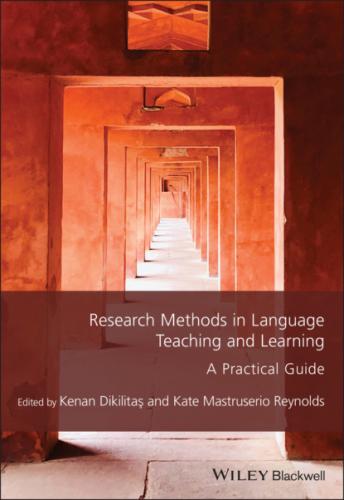311 299
312 300
313 301
314 302
315 303
316 304
317 305
318 306
319 307
320 308
321 309
322 310
323 311
324 312
325 313
326 314
327 315
328 316
329 317
330 318
331 319
332 320
333 321
334 322
335 323
336 324
337 325
338 326
339 327
340 328
341 329
342 330
343 331
344 332
345 333
346 334
347 335
348 336
349 337
350 338
351 339
352 340
353 341
354 342
355 343
356 344
357 345
358 346
359 347
360 348
361 349
362 350
363 351
364 352
365 353
366 354
367 355
368 356
369 357
370 358
371 359
372 360
373 361
374 362
375 363
376 364
377 365
378 366
379 367
380 368
381 369
382 370
List of Figures
Figure 7.1 Map of Safaliba towns
Figure 10.1 Extract from Sert (2017, p. 21)
Figure 10.2 Extract from Sert (2017, p. 19)
Figure 12.1 Item 16 as it appeared to the respondent
Figure 12.2 Item 28 as presented to the respondent
Figure 13.1 Checklist of the basic procedures of conducting a mixed methods study
Figure 14.1 Scatterplots
Figure 15.1 The first PLS-SEM algorithm
Figure 15.2 Outer loading relevance testing. From A Primer on Partial Least Squares Structural Equation Modeling (PLS-SEM) (2nd.ed.), by J. F. Hair, G. T. M. Hult, C. M. Ringle, and M. Sarstedt, 2017, Washington, DC: Sage Publications. Copyright 2017 by SAGE Publications. Reprinted with permission
Figure 15.3 Measurement model after removing low outer loading indicators
Figure 15.4 Final structural path model
Appendix 15B AMT Criteria Set-up Screen
Appendix 15E Variables, Reliability and Validity
Figure 16.1 Research design submitted in the grant proposal
Figure 16.2 ELLA levels of intervention
Figure 16.3 Time commitment for intervention design
Figure 16.4 Longitudinal foundational findings from ELLA that aided in other major research grants (adapted from Irby et al., 2014)
Figure 18.1 EPPI-Reviewer Flow Diagram
List of Tables
Table 3.1 A sample analysis of qualitative data (from Uztosun, 2013)
Table 3.2 Sources of findings related to developing a theory
Table 3.3 Validity criteria for action research (Burns, 1999, pp. 161–162)
Appendix 6A A Sample of Chaoran’s Approach to Matching Themes Across Data
Table 8.1 Data material
Table 11.1 Research questions and gaps addressed in Candarli et al. (2015)
Table 11.2 Research questions and gaps addressed in Candarli (2020)
Table 11.3 Normalized frequencies of authorial presence markers per 500 words per essay
Table 11.4 Normalized frequencies of discourse organizers and stance expressions per 500 words
Table 12.1 Potential differences of relevance between urban and rural contexts in Indian education
Table 13.1 Three common sub-types of mixed methods design (based on Creswell, 2002)
Table 14.1 CAF measures as dependent variables
Table 15.1 Survey constructs
Table 15.2 Issues to consider
Appendix 15A Literature Review Table
Appendix 15C Advantages and Disadvantages of PLS-SEM
Appendix 15D Composite Reliability and Convergent Validity Assessment
Appendix 15F Results and Discussion Distinction
Table 18.1 Coding characteristics of included studies for our systematic review (Avgousti, 2018)
Appendix 18A Journals included in the searching process
Notes on Contributors
Nahed Abdelrahman serves as a Research Specialist I and the Lead Coordinator of Preparing Academic Leaders MED program in the Center for Research & Development in Dual Language & Literacy Acquisition at Texas A&M University. Her research interests include education policy, social justice and equity, educational leadership, principal preparation policies and implementation, mentoring and its impact on promoting education justice.
Jason Anderson is a teacher educator, educational consultant, award-winning author, and
